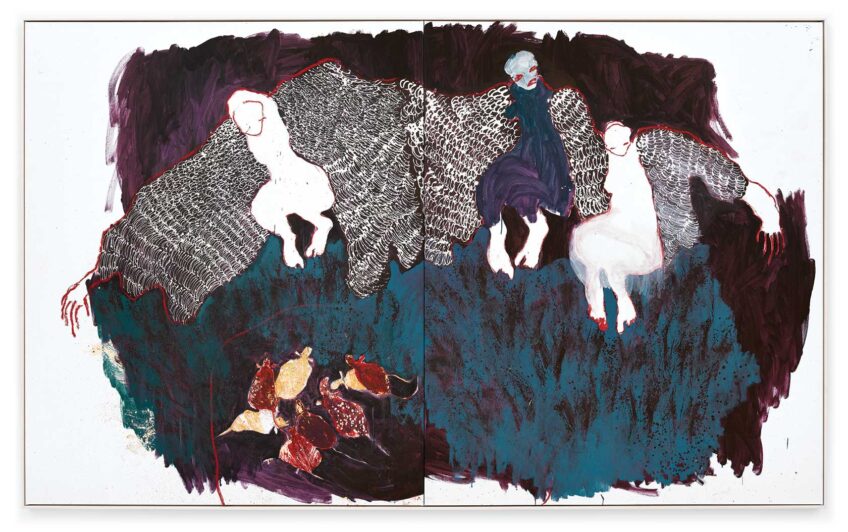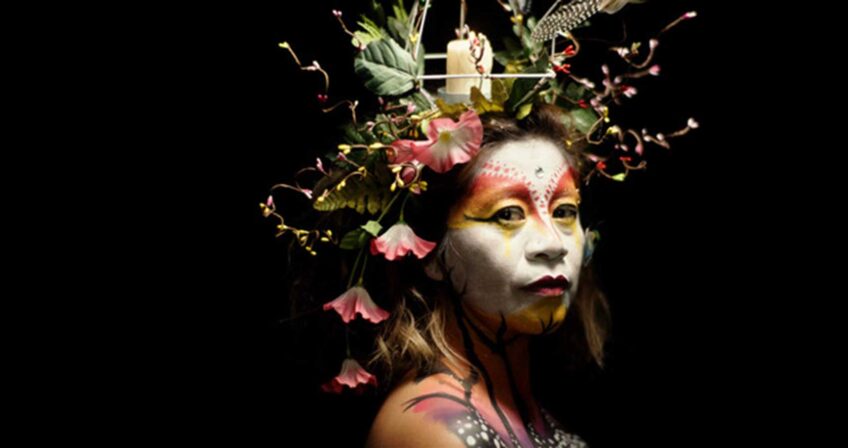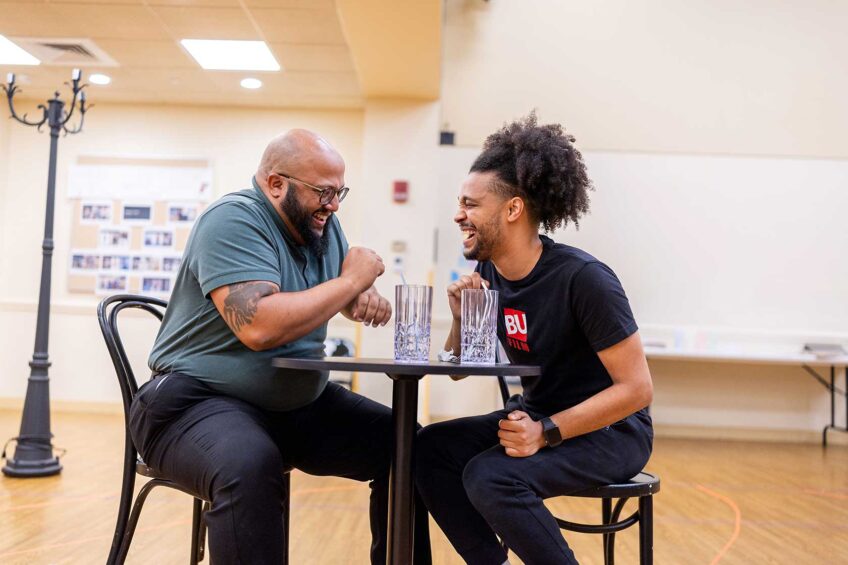Peruvian artist illustrates the cyclical nature of history
‘The Book of Needs’ on display now at Harvard Art Museums

“Fernando Bryce: The Book of Needs,” appears unassuming at first glance. On display at the Harvard Art Museums through May 6, the exhibition features 81 ink-on-paper drawings by the Peruvian artist. The drawings, crafted with watercolor brushes, depict front pages from early issues of the UNESCO Courier, a journal historically focusing on science, race, culture and politics.

A detail from Fernando Bryce’s “Book of Needs” at Harvard Art Museums.
Photo: Celina Colby
Upon closer inspection, it becomes clear that the drawings aren’t exact copies. Bryce has reconstructed the journal pages to highlight specific images, articles and headlines. In this way the artist doesn’t attempt to manipulate or even explain history, but rather to showcase it. Viewers quickly notice that the content Bryce features is still applicable 70 years after the establishment of the Courier.
In a conversation with curator Mary Schneider Enriquez, Bryce says, “An administrative magazine like the Courier is the best material I can have to do my work, because in some ways it’s a kind of re-edition of a historical period through text and images. This idea of building a new constellation by association of images is a basic principle of my work.”
Ongoing issues
Three seminal issues of the Courier jump out at the viewer with white text on black pages. “Race and History,” “Race and Culture” and “Race and Biology” introduced topics of race to the journal in the 1950s. By placing these bold issues at the beginning of the exhibit, Bryce illustrates how racism, along with many other issues covered in the journal, is ongoing today.
The content is almost alarmingly relevant to today’s world. Many of the headlines, like “Human Rights in the Classroom,” “Objective News and Propaganda” and “Cancer: What Science Knows about it Today” could have been pulled from yesterday’s papers. These almost century-spanning issues beg the questions, How far have we really come? and even, Are we moving in the right direction?
Opposite the wall of drawings, cases display original copies of the UNESCO Courier for comparison to Bryce’s drawings. This offers insight into the artist’s process. Before he begins the artworks, he executes an extensive research process to find the right issues and articles.
Bryce doesn’t mean for the exhibit to just be a wakeup call. The work speaks to a deeper human need for understanding and resolution. “In a sense, there is a parallel between that time and ours,” he says. “Both are kind of transitional times; after the war, we were looking toward the future with hope. Now we are looking at the present and at the past in order to find some answers for our time.”







